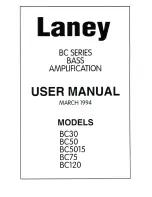
Constant-Voltage-
Constant-Voltage Audio
Distribution Systems:
25, 70.7 & 100 Volts
• Background — Wellspring
• U.S. Standards — Who Says?
• Basics — What is “Constant” Anyway?
• Voltage Variations — Make Up Your Mind
• Calculating Losses — Chasing Your Tail
• Wire Size — How Big is Big Enough?
• Rane Constant-Voltage Transformers
Dennis Bohn
Rane Corporation
RaneNote 136
© 1997 Rane Corporation
Background — Wellspring
Constant-voltage
is the common name given to a gen-
eral practice begun in the late 1920s and early 1930s
(becoming a U.S. standard in 1949) governing the
interface between power amplifiers and loudspeakers
used in
distributed sound systems
. Installations em-
ploying ceiling-mounted loudspeakers, such as offices,
restaurants and schools are examples of distributed
sound systems. Other examples include installations
requiring long cable runs, such as stadiums, factories
and convention centers. The need to do it differently
than you would in your living room arose the first time
someone needed to route audio to several places over
long distances. It became an economic and physical
necessity. Copper was too expensive and large cable too
cumbersome to do things the home hi-fi way.
RaneNote
Constant-Voltage audio distribution systems:
25, 70.7 & 100 Volts
















































